Newborn Sense Experiences
Slide 1 of 17: Synopsis
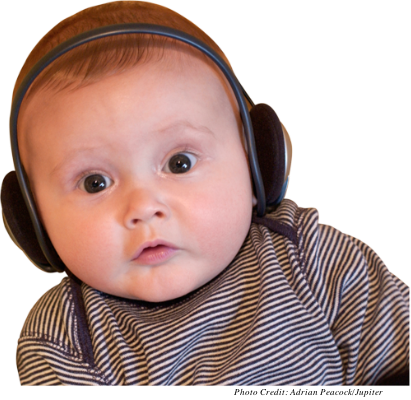
Author
S. Stavros Valenti, Hofstra University
Synopsis
In this activity, you will explore the sensory world of newborns in their first year and some of the research on early newborn sense experiences.
References
Eimas, P. D. (1985). The perception of speech in early infancy. Scientific American, 252, 66–72.
Johnson, M. H., Dziurawiec, S., Ellis, H., & Morton, J. (1991). Newborns’ preferential tracking of facelike stimuli and its subsequent decline. Cognition, 40, 1–19.
Kellman, P. J., & Banks, M. S. (1998). Infant visual perception. In R. Siegler & D. Kuhn (Eds.), Handbook of child psychology: Vol., 2 (5th ed., pp. 103–146). New York: John Wiley & Sons.
Marlier, L., Schaal, B., & Soussignan, R. (1998). Neonatal responsiveness to the odor of amniotic and lacteal fluids: A test of perinatal chemosensory continuity. Child Development, 68, 611–623.
Russell, M. J., Mendelson, T., & Peeke, H. V. (1983). Mothers’ identification of their infant’s odors. Ethology & Sociobiology, 4, 29–31.
Slide 2 of 17: A Newborn Awakens to a New World
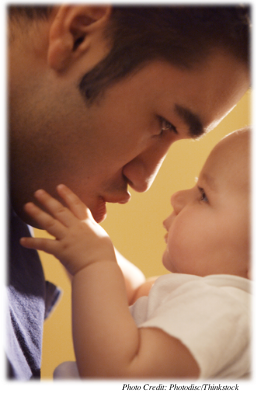
What does a newborn experience in the first moments of life? This may seem like an impossible question to answer because, after all, babies cannot talk. However, research over the last 50 years has revealed that the sensory experiences of newborns, including sight, sound, taste, smell, touch, and the sensations that come from moving their own bodies, are vital tools for gathering information about the people and the world around them. Touch, smell, and taste function very well at birth. Hearing and vision are less well developed in newborns and need time outside of the mother’s womb to reach their fullest potential.
Slide 3 of 17: What Do Babies Feel?
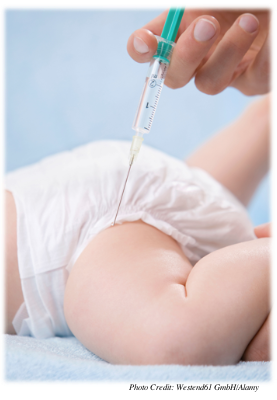
Newborns are born with highly developed reflexes, many of which are designed to help them survive in their new world outside of their mothers’ wombs. Some reflexes are stimulated by touch, such as the rooting reflex in which the baby turns her head toward the source of a touch on the cheek in hopes that it might be a nipple! Other reflexes are stimulated by a sense of the position of the body, such as the Moro reflex in which the baby reaches outward with his arms while arching his back in response to a sensation of being dropped.
Just watch any newborn baby react to a needle prick during a medical examination, and you can see that, indeed, babies can feel pain. Newborns are sensitive to changes in temperature, touch, and movements of their own body from the very first day of life. These sensitivities increase over the next few days.
Slide 4 of 17: What Do Babies Smell?
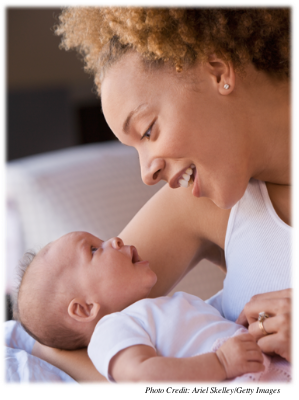
Infants sense touch, temperature changes, and position changes at birth. Taste and smell are also well developed from the start. For instance, infants show preferences for some smells. A newborn clearly does not like foul smells, such as vinegar, rotten eggs, or ammonia. He scrunches up his nose when exposed to these odors.
Breastfed infants can recognize their own mothers by smell alone. When given a choice, they will turn their heads toward pads that were previously wiped under their mothers’ armpits or breasts and away from pads with the smell of other breastfeeding mothers (Marlier, Schaal, & Soussignan, 1998). Sensitivity to odors is a two-way street since mothers also can tell their own babies from smell alone (Russell, Mendelson, & Peeke, 1983).
Slide 5 of 17: What Do Babies Taste?
- Chapters
- descriptions off, selected
- captions settings, opens captions settings dialog
- captions off, selected
- English Captions
This is a modal window.
Beginning of dialog window. Escape will cancel and close the window.
End of dialog window.
This is a modal window. This modal can be closed by pressing the Escape key or activating the close button.
This is a modal window.
Infants seem to have a sweet tooth even before they have teeth! While taste is one of the most developed senses at birth, how individuals feel about different tastes does evolve over time. There are many tastes, such as certain vegetables, coffee, or tea, that infants and young children cannot stand but grow to like or even love as adults. Taste does appear to have had an evolutionary function, so its basic roots likely aided in survival at some point in human history.
Play the video to watch Lilly’s facial expressions in reaction to different tastes.
Slide 6 of 17: What Do Babies Hear?

Hearing sensitivity improves over the first weeks of life. From their first moments, neonates respond to a wide variety of sounds. At birth, they can hear words spoken at a normal conversational level, but they cannot hear a whisper. They can distinguish among various sound pitches at birth, and their ability to distinguish small differences in tones gets better during the first year.
One of the most impressive characteristics of newborns’ hearing is how sensitive they are to small changes in human speech sounds. For example, they can hear differences in stressed syllables in a word, such as “ma-MA” versus “MA-ma.” They can distinguish the difference between happy-sounding, sing-song speech, such as “Good baby, there you go,” versus angry-sounding, staccato speech, such as “No! Stop that!” Interestingly, infants generally prefer a lullaby-type song to adult songs.
Babies even notice variations in syllables differing in only one sound, such as “pa” versus “ba.” This is an important skill because later when they learn to speak, we want babies to “pat,” not “bat,” the cat. Every spoken language is composed of speech elements called phonemes, such as the /p/ in “pat” or the /b/ in “bat.” Becoming a native speaker and listener requires that the infant discriminate among these basic speech elements.
Slide 7 of 17: Discriminating Sounds
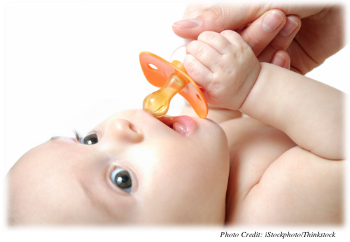
Young infants can discriminate most of the phonemes used in speech and miraculously can even discriminate sounds that are not used in their own native language for the first 6 months or so. Compared to older infants, children, and adults, newborns and young infants are sensitive to a broader set of phonemes (Eimas, 1985). Consider that this extra sensitivity helps infants learn any language no matter what phonemes are used. Over time, babies become fine-tuned to just those phonemes that they hear every day.
How are researchers able to assess a newborn’s ability to discriminate speech sounds? Researchers have used the habituation-dishabituation technique. Infants are given a special pacifier to suck. If they suck quickly, they will hear a repetitive series of sounds, such as “pa-pa-pa-pa-pa.” Infants seem to enjoy turning on this new sound, but they get bored and demonstrate habituation as they tend to stop sucking quickly as if the sound is no longer stimulating. If, without warning, the sound changes from “pa-pa-pa-pa-...” to “ba-ba-ba-ba-...,” infants tend to begin sucking quickly again as if their interest in the sound has been renewed. In this instance, their sucking demonstrates dishabituation as the introduction of a new sound has revived their interest.
Click to the next screen to hear a simulation of this speech discrimination experiment.
Slide 8 of 17: Discriminating Sounds

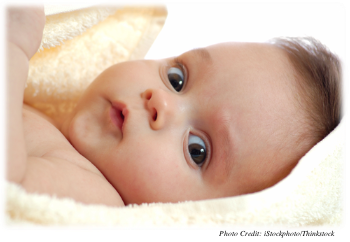
Slide 9 of 17: What Do Babies See?
- Chapters
- descriptions off, selected
- captions settings, opens captions settings dialog
- captions off, selected
- English Captions
This is a modal window.
Beginning of dialog window. Escape will cancel and close the window.
End of dialog window.
This is a modal window. This modal can be closed by pressing the Escape key or activating the close button.
This is a modal window.
Vision seems to be one of the least developed sensory systems in newborn babies. Newborns have very little color vision at birth. They probably can only distinguish among high contrast, bright colors, such as black and white. By 3 or 4 months of age, an infant can distinguish more colors and different shades of the same colors.
The reason for such poor color and detail among newborns is the immaturity of the sensory cells in the retina of the eye and of the neurons of the vision centers in the occipital lobe of the cerebral cortex. As new synapses are formed and as these emerging brain circuits are sculpted by experience, vision will steadily improve over the first year. By their first birthday, infants may likely see as clearly as adults.
Vision is not just about recognizing what objects are and where they are. Vision is one way to know what things are doing. Newborns are particularly interested in objects that move. They follow moving objects and lights and prefer to look at moving, rather than stationary, objects.
Slide 10 of 17: What Do Babies See?
Newborns’ eyes are not sensitive to low light levels and do not respond well to many different colors. Newborns’ vision is very blurry especially for distant objects. With vision rated at 20/400, babies can see an object at 20 feet no better than an adult with perfect vision could see the same object at 400 feet. Newborns are very nearsighted. Throughout the first year, infants’ abilities to see distant objects gradually improve.
How do we know anything about infants’ eyesight? And furthermore, how do we know that infants’ eyesight is so poor? One research technique is based on the fact that the human eye will move reflexively to follow movements. If you show humans of any age a moving pattern of stripes, the person’s eyes will follow the movement, dart back to the center, and repeat the cycle over and over again. These movements are a type of visual reflex that will occur as long as the visual system can “see” the stripes (Kellman & Banks, 1998).
Click on the picture to start just such a moving pattern of stripes, and consider the visual reflexes of a baby younger than one year.
Slide 11 of 17: For Babies, What’s In a Face?

There is something about a baby’s face that captures our attention, but did you know that faces also capture the attention of newborn babies? This surprising fact has been demonstrated in several experiments. When schematic drawings of a face are slowly moved from the center of a newborn’s vision field to the side, newborns display the greatest amount of head and eye tracking movements in response to the more face-like drawings. A schematic face with scrambled features or a blank oval will also be tracked, but not with as much movement as the drawings with face-like features in their proper positions (Johnson, Dziurawiec, Ellis, & Morton, 1991).
Does this mean that newborns have a built-in ability to recognize faces? It is probably more likely that their visual system is prepared at birth to respond to face-like elements, such as two blobs aligned horizontally with a single blob below all contained within an oval shape. This built-in response may ensure that infants spend time looking at faces and learning about them. After a few days of seeing, babies begin to prefer their mother’s face to the face of an unfamiliar woman. During the first years, babies can discriminate some facial expressions, such as a happy face versus a sad face. By the end of the first year, infants seem to understand what some facial expressions mean, and as a result, newborns will look longer at a happy face than at an angry one.
Slide 12 of 17: Newborns Are Ready to Learn: Final Thoughts
- Chapters
- descriptions off, selected
- captions settings, opens captions settings dialog
- captions off, selected
- English Captions
This is a modal window.
Beginning of dialog window. Escape will cancel and close the window.
End of dialog window.
This is a modal window. This modal can be closed by pressing the Escape key or activating the close button.
This is a modal window.
The senses are a baby’s connection to the world, and that connection is present from the first minutes of life. Touch, taste, smell, hearing, and vision (to a lesser-extent) are the tools with which the newborn begins to learn about objects in the world.
What will a baby learn about in the first days of life? Babies seem to find some objects very interesting because they move, make special sounds, are close by, have a familiar odor, and contain intrinsically attractive visual features, such as two blobs in a horizontal row and a blob underneath. These objects, of course, are their caregivers, and the sensory systems help the baby first learn about important people and later, about important objects and places in the world.
Slide 13 of 17: Assessment: Check Your Understanding

Slide 14 of 17: Assessment: Check Your Understanding

Slide 15 of 17: Assessment: Check Your Understanding

Slide 16 of 17: Assessment: Check Your Understanding

Slide 17 of 17: Assessment: Check Your Understanding

Congratulations! You have completed this activity.Total Score: x out of x points (x%) You have received a provisional score for your essay answers, which have been submitted to your instructor.